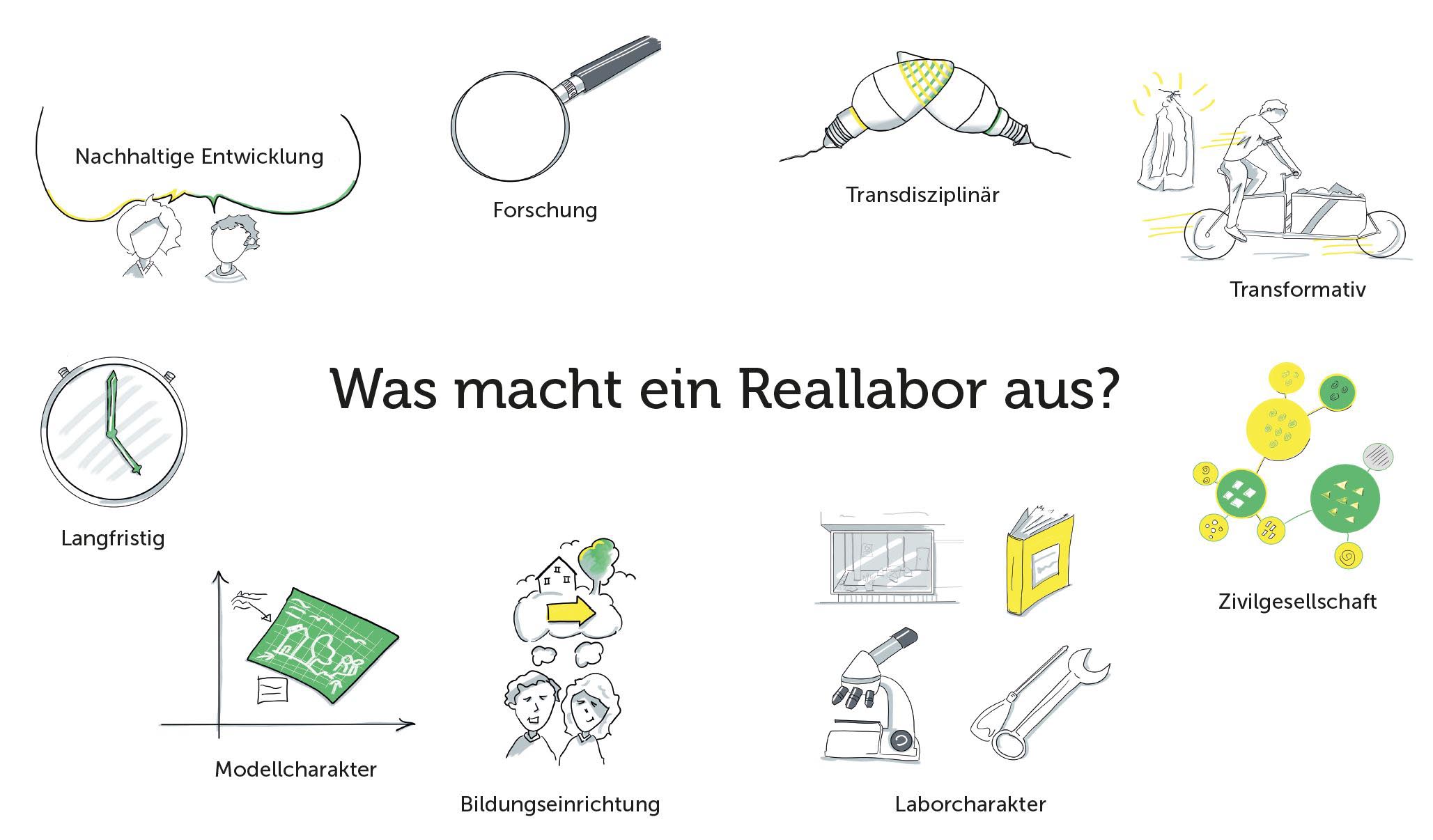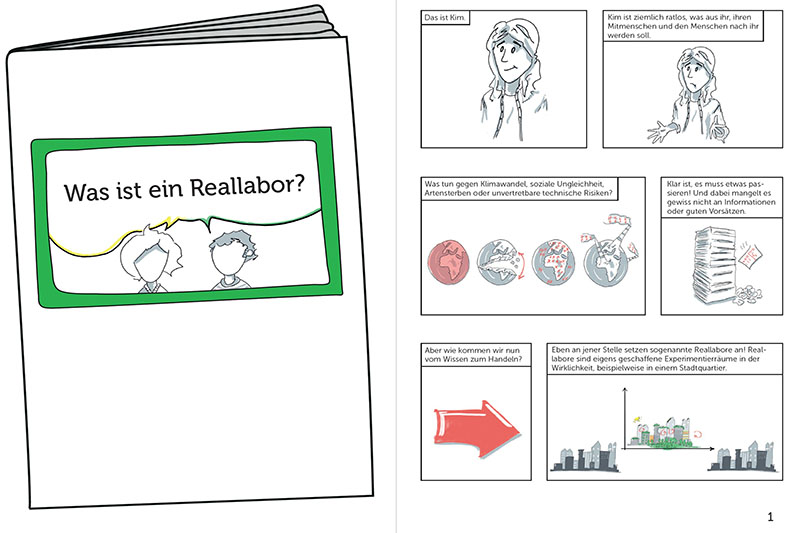What is a real-world lab?
A real-world lab is a transdisciplinary research and development facility. Science and society work together on sustainable solutions. Universities, local authorities, non-governmental organizations, companies, state institutions and associations come together as pioneers of change in real-world lab under the guiding principle of sustainable development – in this respect, the real-world labs see themselves as pioneers of change.
Civil society and citizens are important and strong partners. They all take responsibility for future generations, shape the future and form the crystallization points of a "new social contract" (WBGU 2011). Initiating transformation processes in a participatory and cooperative manner and consolidating scientific and social learning processes are key objectives of the real-world lab work.
Real-world labs experiment. Providing a framework and opening up spaces to jointly develop, test and research a good life for today and tomorrow. Through a variety and density of sustainability experiments, synergies and conflicts between individual and previously independent "sustainability solutions" are to be recognized and dealt with in the real-world lab (keyword: "dense sustainability"). The ultimate goal is to initiate and support the development of future cultures of sustainability and where possible, to live them already.
Characteristics of a real-world lab
In recent years, our work has crystallized key characteristics of a real-world lab, which also form the basis for our work in Quartier Zukunft.
- Research orientation
- Transformative (design)
- Orientation towards the guiding principle of "sustainable development"
- Transdisciplinarity (participation)
- Inclusion of civil society actors
- Model character (transferability)
- Long-term nature
- Laboratory character
- Place of learning and educational institution
More literature:
Parodi, O. & Steglich, A. (2021): Reallabor. In: Handbuch Transdisziplinäre Didaktik. Hrsg.: T. Schmohl. S. 255–265.
Introductory literature to "real-world labs" in theorie and practice
Das Format „Reallabor“ kurz und knapp im Überblick:
- Parodi O.; Steglich, A. (2021): Reallabor. In: Handbuch Transdisziplinäre Didaktik. Hg.: T. Schmohl. transcript, S. 255–265.
- Parodi, O. et al. (2023): Real-World Lab. In: Handbook Transdisciplinary Learning. Ed.: T. Philipp, transcript, S. 287–296. (Englisch)
- Defila, R.; Di Giulio, A. (Hg.) (2018): Transdisziplinär und transformativ forschen – Eine Methodensammlung. Springer.
- Defila, R.; Di Giulio, A. (Hg.) (2019): Transdisziplinär und transformativ forschen, Band 2. Springer.
- Schäpke N. et al. (Hg.): Impacts of Real-world Labs in Sustainability Transformations. GAIA Special Issue. S1/2024.
- Parodi et al. (2024). Reallabor versus Realexperiment: Was macht den Unterschied? GAIA 33/2 pp. 216 – 221.
- L'Orange Seigo, S. et al. (Hg.) (2023): Interventionen in Reallaboren: ein Handbuch für die Praxis. ETH Zürich.
- Quartier Zukunft et al. (Hg.) (2020): Dein Quartier und Du – Nachhaltigkeitsexperimente im Reallabor zu Nachbarschaften, Bienen, Naschbeeten, Kreativität und Konsum. KIT Scientific Publishing.
- Beecroft et al. (Hg.) (2016): Reallabore als Orte der Nachhaltigkeitsforschung und Transformation. TATuP 3/2016.
- Parodi et al. (2016): Von „Aktionsforschung“ bis „Zielkonflikte“: Schlüsselbegriffe der Reallaborforschung. TATuP 3/2016. S. 9–18.



